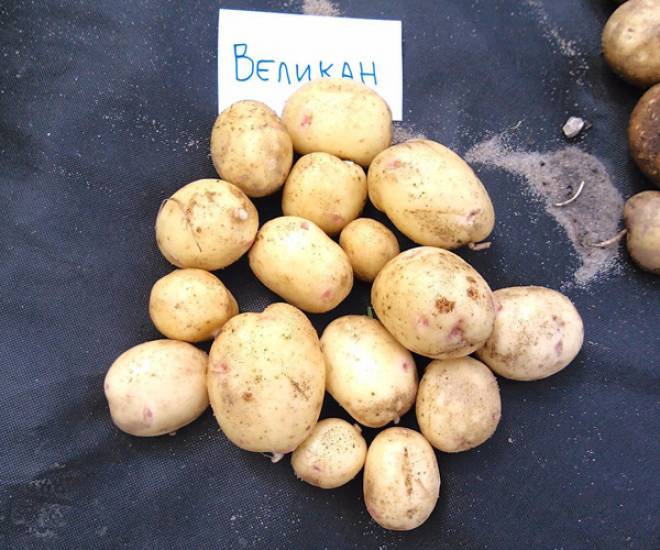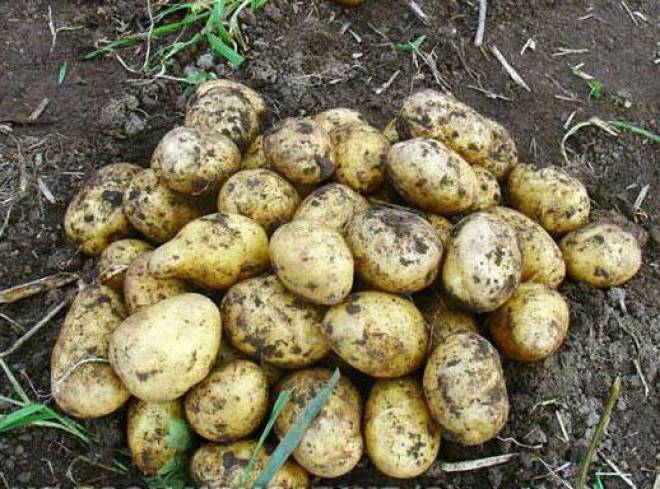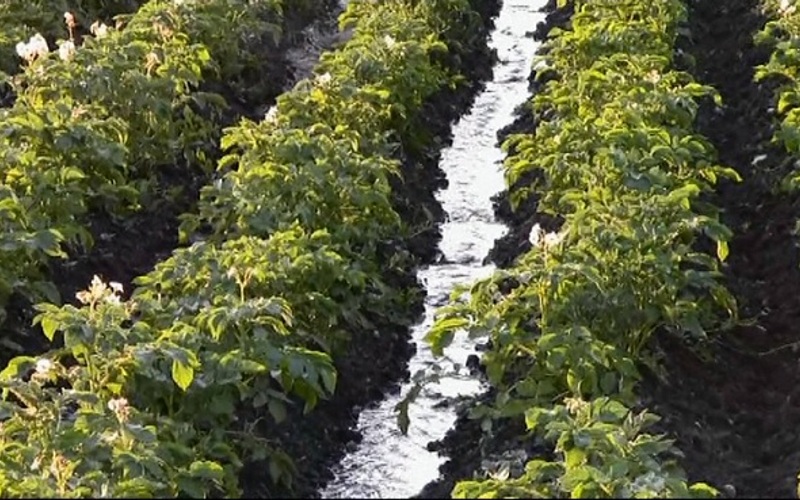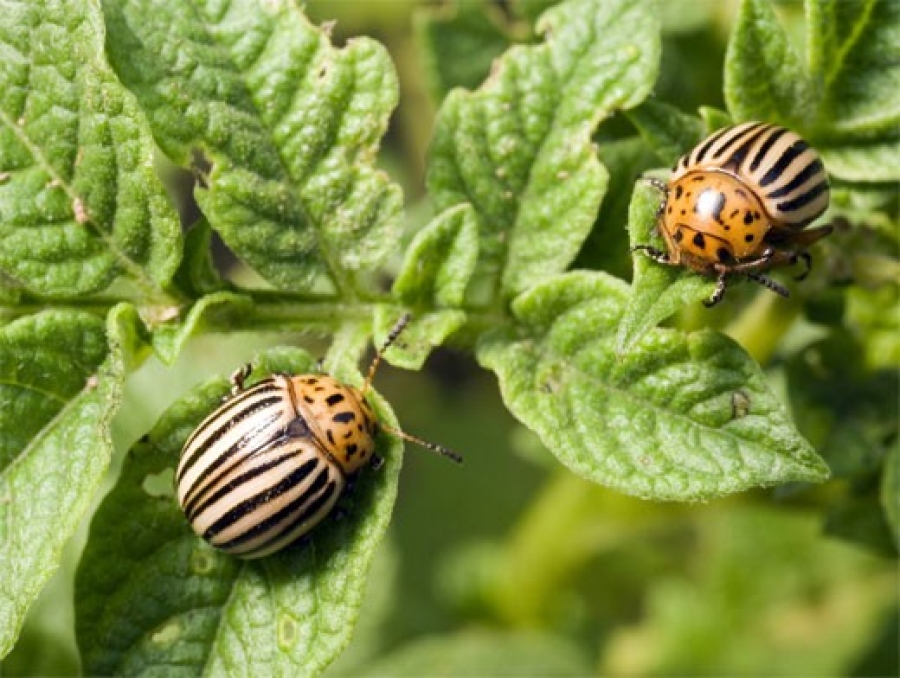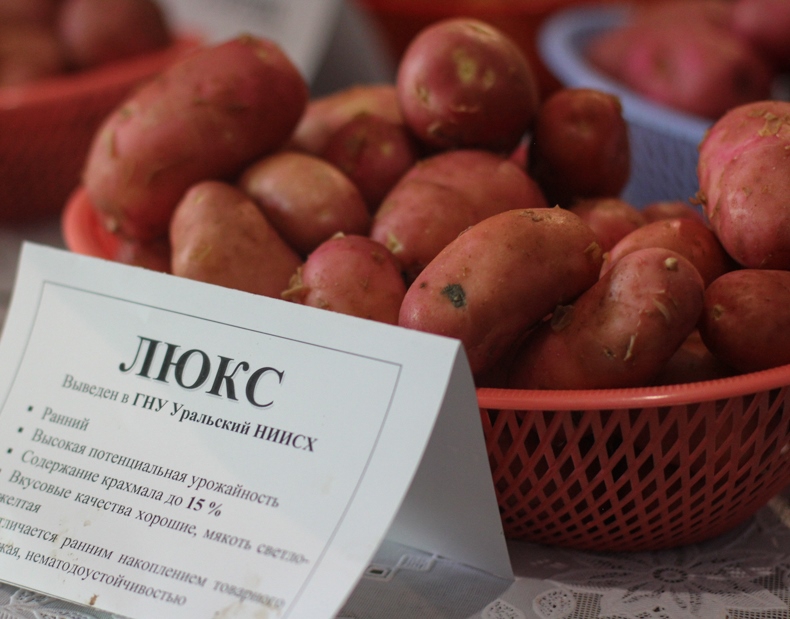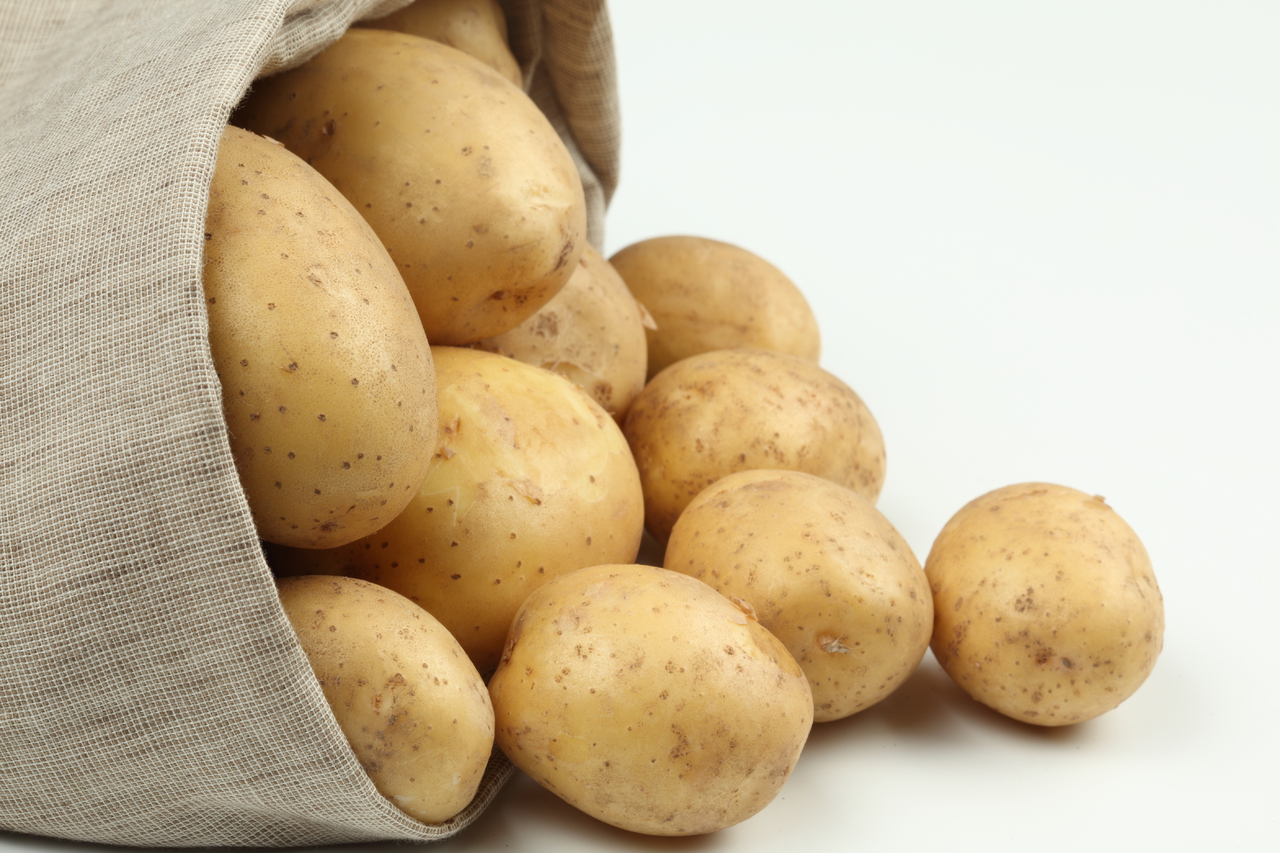Content:
The Giant Potato is a new variety capable of producing bountiful yields. Its properties are fully reflected in the name - large tubers reach almost 150 g. Suitable for processing in the production of food, as well as for sale and culinary processing.
general characteristics
The Giant variety was bred in Russia. Scientists-breeders of the V.I. Lorkh bred a new potato, in 2013 they entered it into the State Register. The “parents” are the varieties Effect and 946-3.
Giant potatoes, according to the description in the State Register, are mid-season - from planting to harvesting, a vegetable takes about 3 months. It is valuable as a table variety, since it contains from 16 to 19% starch. In addition, it tastes great and is very productive - up to 424 quintals of product can be harvested from one hectare.
According to some reports, the maximum harvest that has been harvested during the period of its existence is 913 centners per hectare. The weight of potatoes ranges from 100 to 140 g. Although some Siberian types of vegetables give more root crops, this variety is also the Gigant potato.
Description of the variety
Bushes of the plant are tall, not spreading, with straight stems. They have large, jagged, light green leaves along the edges. Corolla consists of small red flowers with a lilac tint. The root system is highly developed. Under the bush usually 8 to 13 tubers are formed.
On smooth, shiny tubers with a thin cream-colored skin, there are barely noticeable pink eyes. The inside of the product is also creamy. The pulp does not disintegrate during cooking.
Features of cultivation
Cultivation and care are no different from other varieties of agricultural technology. It is important not to be mistaken when choosing a landing site.
Where is better to plant
The giant prefers rich black soil and sandy loam. On heavy clay soils, its yield decreases. The vegetable does not tolerate waterlogging, and also does not tolerate stagnant rain and melt water. If there are water horizons on the site close to the surface, then it is better to land on the ridges.
The place where you plan to place potato ridges should be sunny. Potatoes cannot be re-planted where they grew in the previous year. It will be possible to return it to this site only after 3-4 years.
It is good if you have at your disposal a plot where cereals and legumes, as well as siderates, were sown before.
Soil fertilization
From the fall, before plowing, the area on which it is planned to plant potatoes is filled with organic matter, semi-rotted manure, compost, peat or humus. In the spring, additional fertilization is carried out by adding them directly to the holes or furrows. You can use complex mineral or organic fertilizers (mullein, peat, compost).
Some vegetable growers, based on their own experience, suggest replenishing the soil with trace elements. Crushed eggshells and soda solution applied under the bushes become sources of calcium and sodium. In addition, these elements contribute to root development, which ultimately affects the harvest.Foliar dressings have proven themselves well, which can be carried out 10 days before harvesting potatoes. To do this, you need to carefully spray the sheet with a superphosphate solution.
Green fertilizers as part of infusions are becoming more and more popular:
- onion peel:
- garlic or its vegetative parts;
- weeds collected on the site (nettles, quinoa, dandelions, etc.).
Landing
With the arrival of spring, it is time to take care of the planting material. Before planting it is sorted out, removing spoiled and diseased potatoes.
For planting, take medium-sized tubers. You can also use large ones, having previously cut them into pieces. The main thing is to leave 2 or 3 kidneys on each of them. To acquire a variety, Giant seed potatoes can be purchased at one of the specialized stores.
Further, for better germination, the eyes are recommended to be treated with a growth stimulator. In advance (about 3 weeks) they are placed in a bright place and vernalization is carried out. Warming up triggers the growth of future shoots, and greening due to the formation of poisonous solanine protects tubers from the "encroachment" of pests and diseases. Non-germinated specimens are discarded.
Large-fruited potato bushes need space. They are planted in various ways: on flat beds, on ridges, in furrows and trenches. The key to the harvest is compliance with the planting scheme. In a row, indents of about 25-30 cm will be optimal. Row spacings are determined with a twine or cord and should be the same in width so that no bush is deprived of space. Between the rows, one should retreat not less than 0.6 m when landing under a shovel and 0.7 m - with a mechanical method. If small tubers are planted in the ground, the distance between them is reduced.
Top dressing and watering
A good effect is provided by feeding. Before the potatoes begin to bloom, the bushes need to be given additional nutrition. For this purpose, feeding is organized. Here, too, it is appropriate to use minerals. If you resort to organic, then it can be a solution of mullein or chicken droppings.
After applying them, it is advisable to water the rows. Humidification is necessary for the Giant, but subject to the measure. You can water it under a bush, but the ideal option is to add green solutions and nutrients to the water with drip irrigation. The moistening depth of the beds is 30-50 cm.
During the season, the growing bushes are spud at least 2-3 times, the beds are weeded, removing weeds. Mulching that uses grass, hay, straw, sawdust, and tree leaves should not be underestimated or ignored. It creates a microclimate and prevents crusting and cracking around the stems due to intensive evaporation of moisture.
Harvesting
The withered tops, and later drying out, indicate that it is time to prepare for harvesting. 7 days before it starts, dry stems are mown. During this period, the tubers ripen completely, after digging up:
- They are dried under awnings or in sheds, covered with a dense cloth that limits the entry of light.
- Large root crops are selected for consumption, standard ones - for seeds. Small ones go to feed.
- Store in vegetable stores or adapted rooms: apartments, basements, cellars, on balconies. Pits and trenches are sometimes used as storage facilities.
- Monitor temperature and humidity.
If these parameters are normal, then the keeping quality of potatoes is 97%.
Diseases and pests
The culture is resistant to cancer. Not susceptible to mosaic (banded and wrinkled), rhizoctonia, common scab. Occasionally it can be exposed to leaf curling. There is also a lack of resistance to golden nematode and late blight.Since the culture's resistance to late blight is poorly formed, the tops are treated with preparations containing copper.
For prophylactic purposes, modern drugs are sometimes used. When growing potatoes, fungicides (antifungal agents) are used: Ridomil, Tattu, Antrakol. A wide range of insecticides are used to control the Colorado potato beetle and other pests.
If it were not for the susceptibility of potatoes to some damage, the culture would have almost no flaws. It turns out that the Blue Giant potato existed before the war. Its characteristic purple color protected the product from late blight at a time when other varieties were affected by the disease.
Advantages and disadvantages
Potatoes have a lot more pluses than minuses. The advantages of the variety include:
- pleasant taste of root vegetables;
- large size of tubers;
- sufficiently high yield;
- marketability of root crops;
- heat resistance and ability to withstand dry periods;
- preservation of varietal qualities of the mother plant;
- immunity to most diseases;
- excellent keeping quality, manifested in the ability to maintain quality for a long time.
The disadvantages include susceptibility to damage to the golden nematode and late blight, the Giant is unable to resist them.
This type of potato crop is promising and deserves attention. If you follow the rules of agricultural technology, you can get a decent harvest of a wonderful variety.
